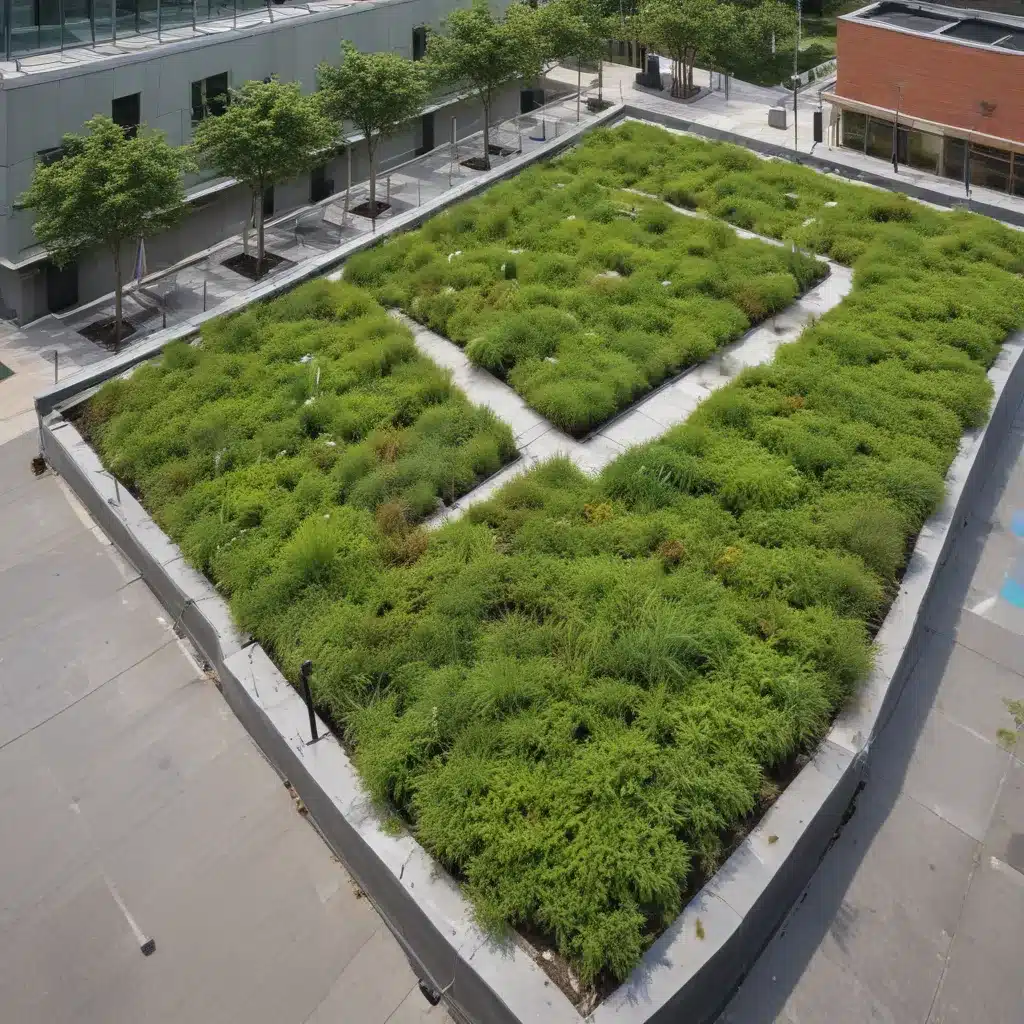
As cities continue to expand, the challenges of urban stormwater management are becoming increasingly complex. Impervious surfaces like roads, parking lots, and buildings create more runoff, while the growing frequency of extreme weather events linked to climate change puts additional strain on traditional drainage infrastructure. Transitioning to a more sustainable and resilient approach is essential for managing flood risks, improving water quality, and enhancing the overall livability of our urban environments.
Now, this might seem counterintuitive…
Embracing Green Infrastructure
Green infrastructure offers a nature-based solution that complements and, in many cases, replaces traditional “gray” stormwater systems. By incorporating natural elements like vegetation, soil, and permeable surfaces, green infrastructure mimics the hydrological processes of undeveloped landscapes. This allows rainfall to be captured, filtered, and gradually released back into the ground or atmosphere, reducing the burden on storm sewers and minimizing polluted runoff.
Green roofs are a prime example of this approach. By supporting a living layer of plants, green roofs can absorb and retain up to 80% of the rainfall they receive, slowing down the flow of stormwater and reducing the strain on drainage systems. The vegetation also provides insulation, helping to regulate building temperatures and mitigate the urban heat island effect. Furthermore, the plants on green roofs act as natural filters, trapping sediments and absorbing nutrients and pollutants.
Coupling green roofs with blue roof systems, which focus on temporarily storing rainwater before slowly releasing it, creates an even more integrated approach to stormwater management. These hybrid systems optimize the complementary roles of water retention and gradual release, providing comprehensive control over urban runoff.
Permeable surfaces offer another powerful green infrastructure solution. By allowing water to infiltrate through porous paving materials, rather than running off into storm drains, these surfaces reduce the overall volume of stormwater and prevent localized flooding. Permeable pavement, interlocking pavers, and pervious concrete are all effective options for parking lots, driveways, and streets.
Beyond individual building and site-level interventions, bioswales and rain gardens play a crucial role in urban stormwater management. These shallow, vegetated channels and depressions are designed to slow down and filter runoff, trapping sediments and pollutants while allowing water to gradually infiltrate the ground. Strategically placed along roadsides, in medians, and in other public spaces, these natural stormwater systems deliver tremendous benefits in terms of flood control and water quality improvement.
Integrating Smart Technologies
Innovative technologies are further enhancing the capabilities of green infrastructure. Artificial intelligence (AI) and the Internet of Things (IoT) enable real-time monitoring and dynamic control of stormwater systems, optimizing their performance in response to changing weather conditions.
Automated valves and sensors can adjust the flow of water through green infrastructure, opening or closing to regulate stormwater levels during heavy rainfall events. This dynamic control helps cities maximize the efficiency of their green systems, ensuring optimal water management regardless of fluctuating precipitation patterns.
Beyond flow regulation, AI-powered analytics also allow for predictive maintenance and preemptive adjustment of green infrastructure. By analyzing data on weather forecasts, rainfall patterns, and system performance, these intelligent systems can anticipate heavy rains and proactively prepare facilities to handle increased flows, further enhancing resilience.
Integrated Water Resource Management
Sustainable urban stormwater management is part of a broader shift toward integrated water resource management (IWRM). This holistic approach recognizes the interconnections between the urban water cycle, ecosystem health, and community resilience.
In addition to reducing flood risks and improving water quality, green infrastructure supports groundwater recharge, enhances urban biodiversity, and provides valuable community amenities like parks and green spaces. By incorporating constructed wetlands and urban forestry into the stormwater management mix, cities can leverage ecosystem-based solutions that deliver even greater environmental and social benefits.
IWRM also emphasizes the importance of water recycling and reuse. Capturing and repurposing stormwater for non-potable uses, such as landscape irrigation or toilet flushing, helps reduce the demand on municipal water supplies, which are increasingly strained by climate change, population growth, and other factors.
Emergency Flood Response
While green infrastructure and smart technologies offer proactive solutions for managing stormwater, robust emergency flood response remains essential. Integrating early warning systems, sensor networks, and predictive analytics into flood management strategies can help communities prepare for and respond to extreme weather events.
Flood forecasting models, coupled with real-time data from strategically placed sensors, enable timely identification of impending flood risks. This information can trigger the activation of adjustable floodwalls and other protective infrastructure, as well as the deployment of emergency response teams and public notifications.
In the aftermath of a flood event, damage assessment and business continuity planning are crucial for facilitating a rapid recovery. Leveraging geospatial data, drone imagery, and other tools, cities can efficiently evaluate the scope of damage and prioritize restoration efforts. By working closely with the private sector and community stakeholders, local governments can also support the continuity of critical services and economic activities, building long-term resilience.
The Path Forward
As municipalities continue to grapple with the challenges of urban stormwater management, a comprehensive, multifaceted approach is essential. By embracing green infrastructure, integrating smart technologies, and adopting an integrated water resource management strategy, cities can enhance their flood resilience, improve water quality, and create more livable, sustainable communities.
Regulatory updates, financial incentives, and collaborative public-private partnerships will be key to driving the widespread adoption of these innovative solutions. By investing in this proactive, nature-based approach to stormwater management, we can better safeguard our urban environments and prepare for the climate-driven changes to come.
Visit Flood Control 2015 to explore more resources and stay informed about the latest advancements in flood risk mitigation and urban water management.
Tip: Implement real-time monitoring to swiftly respond to flood risks















